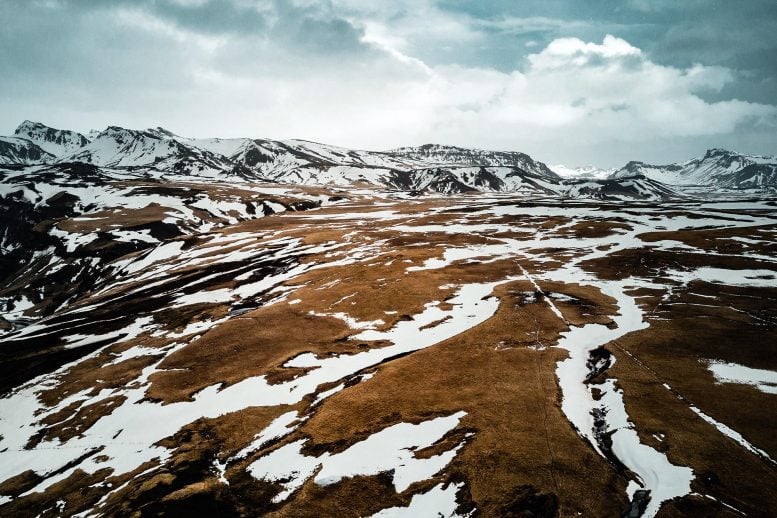
An international team of researchers is using drone and satellite technology to study how the treeless regions known as tundra are becoming greener.
New research techniques are being adopted by scientists tackling the most visible impact of climate change — the so-called greening of Arctic regions.
The latest drone and satellite technology is helping an international team of researchers to better understand how the vast, treeless regions called the tundra is becoming greener.
As Arctic summer temperatures warm, plants are responding. Snow is melting earlier and plants are coming into leaf sooner in spring. Tundra vegetation is spreading into new areas and where plants were already growing, they are now growing taller.
Understanding how data captured from the air compare with observations made on the ground will help to build the clearest picture yet of how the northern regions of Europe, Asia, and North America are changing as the temperature rises.
Now a team of 40 scientists from 36 institutions, led by two National Geographic Explorers, have revealed that the causes of this greening process are more complex — and variable — than was previously thought.
Researchers from Europe and North America are finding that the Arctic greening observed from space is caused by more than just the responses of tundra plants to warming on the ground. Satellites are also capturing other changes including differences in the timing of snowmelt and the wetness of landscapes.
Lead author Dr. Isla Myers-Smith, of the University of Edinburgh’s School of GeoSciences, said: “New technologies including sensors on drones, planes, and satellites, are enabling scientists to track emerging patterns of greening found within satellite pixels that cover the size of football fields.”
Professor Scott Goetz of the School of Informatics, Computing, and Cyber Systems at Northern Arizona University, says this research is vital for our understanding of global climate change. Tundra plants act as a barrier between the warming atmosphere and huge stocks of carbon stored in frozen ground.
Changes in vegetation alter the balance between the amount of carbon captured and its release into the atmosphere. Small variations could significantly impact efforts to keep warming below 1.5 degrees centigrade — a key target of the Paris Agreement. The study will help scientists to figure out which factors will speed up or slow down warming.
Co-lead author Dr. Jeffrey Kerby, who was a Neukom Fellow at Dartmouth College while conducting the research, said: “Besides collecting new imagery, advances in how we process and analyze these data — even imagery that is decades old — are revolutionizing how we understand the past, present, and future of the Arctic.”
Alex Moen, Vice President of Explorer Programs at the National Geographic Society, said: “We look forward to the impact that this work will have on our collective understanding of the Arctic for generations to come.”
Reference: “Complexity revealed in the greening of the Arctic” by Isla H. Myers-Smith, Jeffrey T. Kerby, Gareth K. Phoenix, Jarle W. Bjerke, Howard E. Epstein, Jakob J. Assmann, Christian John, Laia Andreu-Hayles, Sandra Angers-Blondin, Pieter S. A. Beck, Logan T. Berner, Uma S. Bhatt, Anne D. Bjorkman, Daan Blok, Anders Bryn, Casper T. Christiansen, J. Hans C. Cornelissen, Andrew M. Cunliffe, Sarah C. Elmendorf, Bruce C. Forbes, Scott J. Goetz, Robert D. Hollister, Rogier de Jong, Michael M. Loranty, Marc Macias-Fauria, Kadmiel Maseyk, Signe Normand, Johan Olofsson, Thomas C. Parker, Frans-Jan W. Parmentier, Eric Post, Gabriela Schaepman-Strub, Frode Stordal, Patrick F. Sullivan, Haydn J. D. Thomas, Hans Tømmervik, Rachael Treharne, Craig E. Tweedie, Donald A. Walker, Martin Wilmking and Sonja Wipf, 31 January 2020, Nature Climate Change.
DOI: 10.1038/s41558-019-0688-1
The paper, published in Nature Climate Change, was funded in part by the National Geographic Society and government agencies in the UK, North America and Europe, including NASA’s Arctic Boreal Vulnerability Experiment (ABoVE) and the UK’s Natural Environment Research Council.
The research was also supported by the Synthesis Centre of the German Centre for Integrative Biodiversity Research, and was informed by a U.S. National Academy of Sciences workshop, Understanding Northern Latitude Vegetation Greening and Browning.

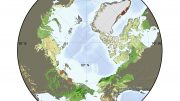
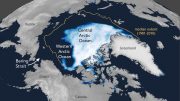
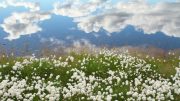
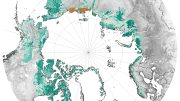
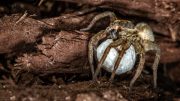
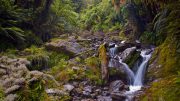
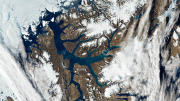
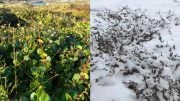
spread grain on it and harvest in august
WARNING! WARNING! WARNING! The ice in the North Pole region is going to be almost completely melted in about 10 to 15 years! The ice in the South Pole will be melted in about 15 to 20 years! NASA or someone else recently made a video, which was posted on the internet that showed the area of the North Pole from the 1960’s all the way up to 2019. In that video you can see that global warming started to progress rapidly since the 1960’s. That is the time that humans started to flying jet engine airplanes and started driving combustion cars in mass. Also that is about the time that China started polluting and heating up the atmosphere with their mass increase in manufacturing plants. In the video you will see that in the 1960’s on the Russian side of the Pacific Ocean where land meets water you will see a warming trend in the coastal water areas of the Pacific ocean. This is caused by the melting of permafrost in Russia’s area of the Earth. Permafrost melts easier than ice which makes it the weakest ice formations on Earth. The permafrost has been melting in the North Pole since the 1960’s and has increased rapidly every year as global warming gets worse. This melting of the permafrost has resulted in a lot of warmer water than normal flowing into the Pacific Ocean in the North Pole area. The video shows how this warming water has drain into the Pacific Ocean and the water currents have distributed this warm water into the North Pole around Russia. As time went on the video shows how this warm water has melted the ice of the North Pole. In the video you can see the water currents yearly melting away the ice of the North Pole. In the latter years of the video you will see that the increase of global warming has also started the melting of the permafrost around Alaska which increased the melting of the North Pole. Folks, in about 10 to 15 years all that ice in the North Pole will have melted and the water currents has distributed that warmer water around the world where it is now helping the accelerate the melting of the South Pole. In about 15 years when the North Pole’s ice is near completely melted and the South Pole is about melted too you will see a whole new weather system all around the world! This new weather system will wreck havoc all over the Earth. It will be an ever changing weather system that will eventually lead the Earth onto a dead march as the Sun starts to bake the Earth into a dead planet that can’t support life as we know it today! Eventually the Earth will start it’s dead march as it becomes more and more like Venus and Mars, two planets that the sun baked into oblivion! Without a certain atmosphere a planet cannot support life. Without clouds the Earth would bake itself and the Sun would evaporate all the water. Without clouds you have no rain. Without rain you have no life on Earth. Without trees and vegetation you have no moisture in the air. Without moisture in the air you have no rain.In the 1960’s us humans started flying jet engine airplanes and rockets of all kinds. Rockets put a lot of hot air into the atmosphere. The Space Shuttles exhaust was as hot as the SUN!!! Jet engine airplanes are gigantic vacuum machines that emit hot polluted exhausts. Jet engine planes suck in massive amounts of air in the upper atmosphere where clouds are formed. A jet engine airplane can suck in and heat up enough air to fill an enclosed Super Size football stadium every two minutes! Then these jet planes heat up the air a lot. A jet passenger plane’s exhaust ranges from 800 degrees for small jet planes to 1200 degrees for large jet engine planes. Military jet planes exhaust can range from 1200 degrees to 2500 degrees! All of this heated exhaust is released into the area of the planet where clouds are formed. The area of the upper atmosphere space begins and where our Earth’s atmosphere starts and where the clouds are formed use to be about 0 degrees and up to 32 degrees. With all the heat from jet planes and rockets our upper atmosphere is daily heating up more! Go on the internet and check out a site called flightradar24.com and on that site you will see how many jet planes are flying at that moment worldwide. Now keep in mind this site doesn’t include all the military jet planes worldwide. Folks, there are about 90,000 jet flights worldwide every day and that doesn’t include military planes which the governments of the world won’t reveal. If you average out that each jet flight is about 3 hours then daily about 194,400,000 enclosed football stadiums of hot polluted air, striped of it’s moisture content, is emitted into our atmosphere. And that is a low estimate! Folks, stand them up and there is only about 30-50 enclosed size stadiums of air between the ground and outer space! As these jet planes travel the Earth vacuuming and heating up the atmosphere they lessen the amount of moisture in the atmosphere which causes less clouds and rain worldwide. Folks, we have to go back to flying propeller airplanes which don’t vacuum the air in our atmosphere like jet planes do and don’t pollute our atmosphere like jet planes do and don’t heat up the atmosphere like jet engine airplanes do! Also we have to get rid of combustion engine vehicles of all kinds because they too suck in air which it then heats up and pollutes. All of us have to convert to driving electric cars and other electrical transportation. You all better do this because in about 10 years when the poles are mostly melted the Earth’s weather system will surely change and it will be too late to change things back to where they were today or the past because there is no way we can make all the ice and snow that we have today in the world or years ago! So I’m warning all of you to do something today before it is too late! I ask all of you just what kind of world do we want to give to our kids?